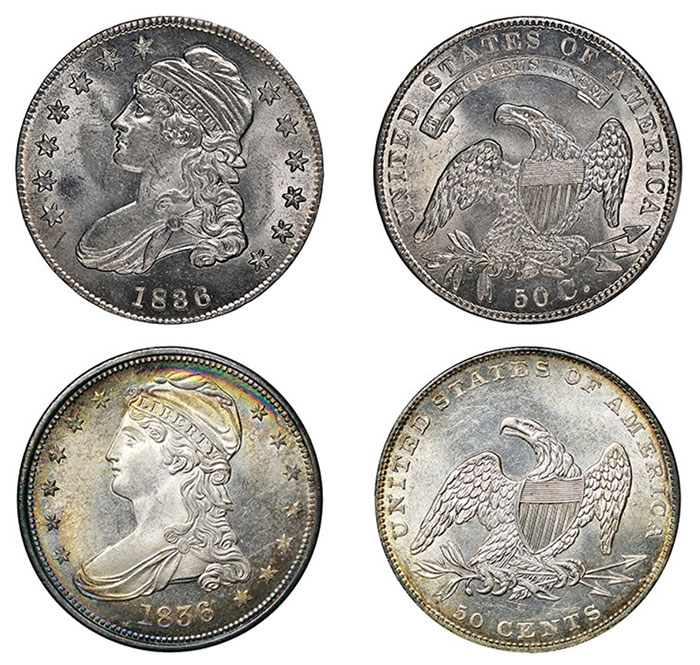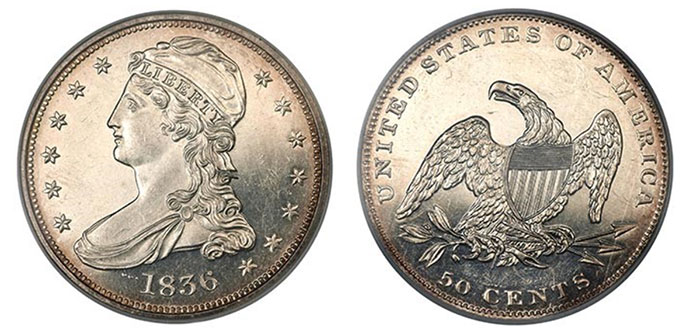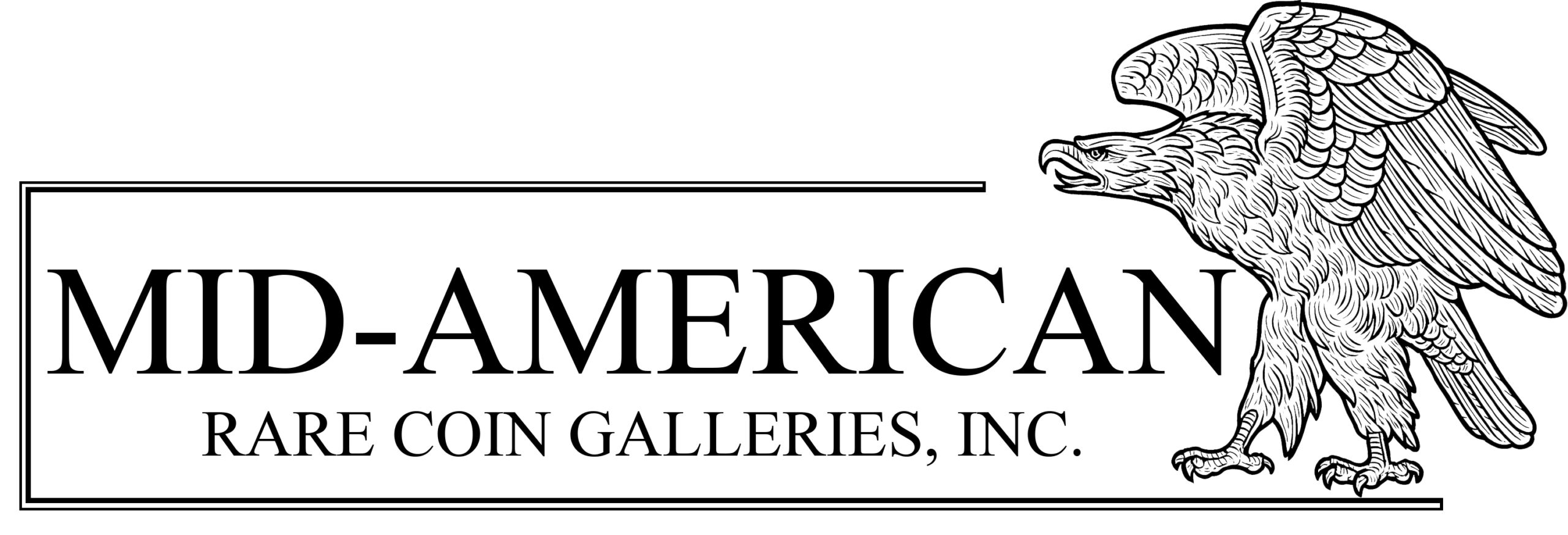One of the more interesting kinds of coin made by the United States Mint over the last 200-plus years are those that can be called “transitional issues.” These coins straddle both an old design and the new one replacing it, often the result of some historical or technological development. The 1836 Reeded Edge Half Dollar touches on both. It is also quite rare and sought after.
Although Christian Gobrecht is best known for his Liberty Seated design (introduced in 1836 for the dollars that bear his name), he also redesigned the 1836 Reeded Edge Half Dollar. John Reich had originally engraved the Liberty Capped design for half dollars in 1807, which continued until 1836 when the Reeded Edge Half Dollar was produced. The modified Reeded Edge design continued through 1839, overlapping with Gobrecht’s Seated Liberty Half Dollar that same year.
Bust Half Dollars were truly a workhorse coin for the United States. Starting in 1805, half dollars were the primary large denomination coin produced. Half dollars were produced annually in large numbers, with the exception of 1816 because of a fire at the Philadelphia Mint. The coins were struck from hand-engraved dies on the Mint’s original screw press. Because of the hand-engraved dies, numerous varieties are known each year, and Bust Half Dollars are eagerly collected by die variety.
First Steam Press (1836)

The Mint’s original hand-operated press was phased out in favor of steam power starting in 1836.
The steam press was invented in France in 1833. In 1836, it was purchased and set up in the United States by Merrick, Agnew and Tyler of Philadelphia. The distinctive feature of the press was the use of the toggle joint, a special mechanism that yielded greater pressure over the screw press. The steam press had a capacity of producing 100 coins per minute. The original steam press is now housed near the entrance to the American Numismatic Association (ANA) headquarters in Colorado Springs, Colorado.
1836 Reeded Edge Half Dollar
In 1836, the Capped Bust Half Dollar was converted from a lettered edge type to one with a reeded edge. The main reason for this change was the conversion to steam power from the hand-operated screw press. The coin’s design was also updated by Christian Gobrecht, with the words “50 CENTS” placed below the eagle instead of the previously used “50 C.” Also, in 1837, the weight of the Reeded Edge Half Dollar was reduced from 208 grains to 206.5 grains. The fineness of silver was raised from .8924 to .900. In 1838, the value on the reverse was changed once again, this time to “HALF DOL.”

As mentioned above, the 1836 is a transitional issue, with the half dollars being issued in two different designs or styles. The 1836 Reeded Edge was produced in very low quantities, with only about 1,200-plus business strikes having been reported. Some experts think more were produced based on the number of survivors. Of this relatively low number, fewer still are actually known – less than 500 estimated.
A few decades ago, some numismatic researchers debated whether or not the 1836 Reeded Edge Half Dollar was produced as a pattern. Over time, this theory was rejected, as the coin was clearly made in ample numbers for circulation.
Most of the survivors seen are circulated, and high-grade examples are quite scarce, with just a few hundred known in all grades. NGC has graded only 178 circulated examples and 36 Mint State examples. Only two coins have been certified as MS 65, with none better. The last NGC MS 65 sold in 2004 for $31,625. If one of the two above coins were to sell now, it would surely bring much more.

A very small number of Proof 1836 Reeded Edge Half Dollars were also produced. The mintage has been estimated at about 15 coins, with about 10 to 12 known. The Proof examples we’ve seen are well struck, with glittering mirror surfaces. The coins are beautifully made.
A letter from Mint Director Robert Patterson to Secretary of the Treasury Levi Woodbury dated November 8, 1836, states:
“I have the pleasure to send you herewith, and beg you to exhibit to the President, the first specimens of our coinage of silver by steam, executed this afternoon.”
It is not known if the above-mentioned coins were circulation strikes or Proofs. Logic would suggest Proof examples had been sent.
The introduction of steam power represented one of the greatest technological advances in the history of the United States Mint. The 1836 Reeded Edge Half Dollar is a wonderful and tangible connection to this watershed moment in numismatic history. This issue is one of my favorite coins from this era of US coinage.
